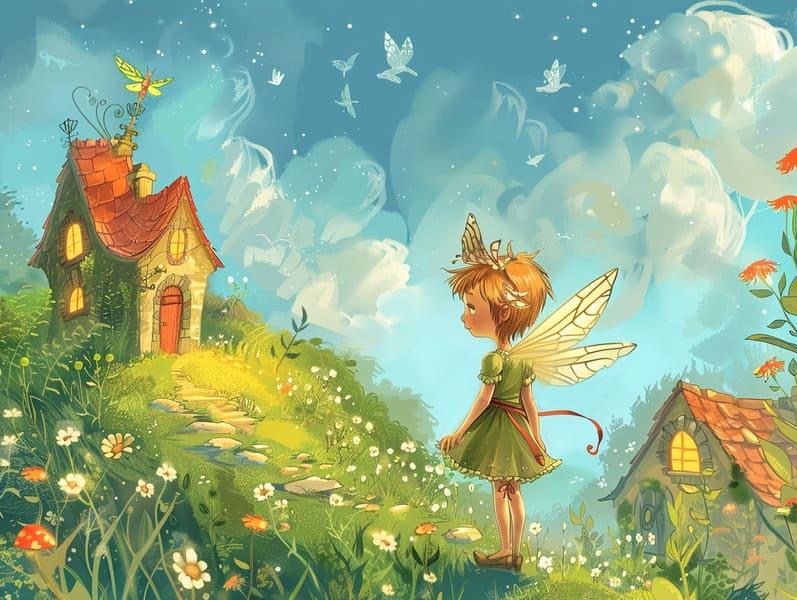
Classic fairy tales have old origins. These narratives have been narrated from one generation to the next millennia before they were ever transcribed. They sprang from a variety of backgrounds, including American traditions. They were initially told among elders, often carrying themes and messages mirroring the societal norms and beliefs of the time.
The Grimm brothers, the two Grimm brothers, were among the first to assemble many of these beloved fairy tales. Their anthology, "Grimm's Story Collection," included tales like "Ashenputtel," "Hansel and Gretel," and "Snow-White and Rose-Red," which have since become cornerstones in the world of classic fairy tales. Similarly, Andersen's magical stories, such as "The Little Mermaid," and "The Story of the Ugly Duckling," have won hearts worldwide, guaranteeing their place in the pantheon of famous fairy tales.
Despite their ancient origins, fairy tales remain as pertinent as ever, especially as nighttime stories for kids. These whimsical stories are now available in many formats, including vibrantly illustrated books, enchanting animations, and online fairy tales.
Their lasting presence can be connected to several whimsical characteristics:
Significant Morals: Old fairy tales often share important moral lessons. Stories like "The Tale of the Boy Who Cried Wolf" teach the benefit of sincerity, while "The Race of the Tortoise and the Hare" stress the virtues of steadfastness and humility. These narratives offer young readers clear distinctions between truth and falsehood, helping to shape their moral compass in a soft yet meaningful way.
Empathy and Awareness: Timeless fairy tales frequently depict heroines facing challenges and problems, urging children to connect with their struggles and champion their triumphs. For instance, "The Tale of Beauty and the Beast" illustrates the merit of looking beyond appearances to know the inner self of a individual, advancing kindness and awareness.
Cultural Understanding: Many classic fairy tales are rich in the cultural contexts from which they originated. Engaging with these stories can provide informative snapshots into different backgrounds, strengthening a sense of cultural understanding and awareness.
Fantasy and Innovation: The extraordinary elements in fairy tales—talking beasts—motivate children’s creative minds. These narratives move readers to magical realms, inspiring inventive dreams and a sense of awe that lasts a lifetime.
Classic fairy tales are not only fantastical but also pedagogical. They act as spellbinding tools in fostering various thinking and feeling skills in young readers. When ancient fairy tales are spoken out loud, they enhance language proficiency by bringing new word meanings and sophisticated sentence structures. This practice also develops listening abilities and mindfulness, as kids focus on every detail, prepared to see what happens next.
Furthermore, contemplating the themes and characters of old fairy tales can promote reasoning skills and critical thinking. Young ones are instructed to spot patterns, expect results, and catch on to cause and effect. These examinations also further the young express their thoughts and feelings, strengthening their emotional intelligence.
In today’s electronic age, the presence of digital storybooks has made these tales more accessible than ever. Internet resources and online apps supply ample collections of children's fairy tales that can be enjoyed or listened on anytime, anywhere. Fairy tales recited are particularly well-liked, featuring an entertaining method for little ones to relish these enchanting tales. Audiobooks and read-to-me stories bring characters and settings to life, often supported by bewitching music and instrumentals that augment the storytelling journey.
The everlasting appeal of classic fairy tales lies in their ability to shift to modern days while keeping hold of their fundamental ideas. Contemporary versions of these fairy tales often present more representative figures and modern settings, making them meaningful to today’s audience. However, the underlying themes of valor, generosity, and even-handedness remain unchanged, continuing to resonate with young listeners of all ages.
Timeless fairy tales also offer a sense of solace and comprehensibility. They impart a structured narrative with a recognizable beginning, middle, and end, often ending with the termination of conflicts and the triumph of morality over immorality. This reliability can be heartening for young ones, extending a sense of sturdiness in an dynamic world.
Old fairy tales continue to fascinate and guide new generations, maintaining their charm check here and applicability in modern society. As nighttime stories for kids, they highlight a perfect blend of charm and understanding, nourishing moral values, empathy, and creativity. The abundance of online fairy tales and the favor of fairy tales spoken ratify that these traditional tales remain accessible to new generations.
By retaining and relating these narratives, we continue to treasure the rich tapestry of lore and cultural heritage. Whether you are discovering a vividly illustrated book, exploring a electronic library, or hearing an sound book, the delight of ancient fairy tales is always within reach. These fairy tales convey of the unwavering magic of stories and its ability to connect us across eras and regions.
Whether you are enjoying a artistically illustrated book, delving into a web collection, or listening through an read-aloud book, the majesty of famous fairy tales is always within reach.
These narratives emphasize of the everlasting spell of tales and its ability to hold us together across centuries and lands, casting a charm that captivates and teaches alike.